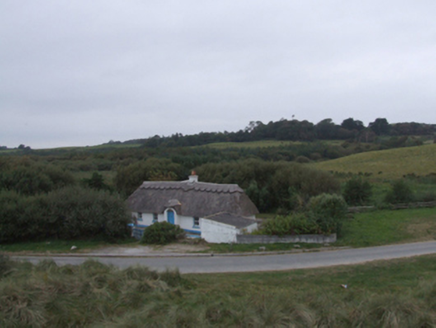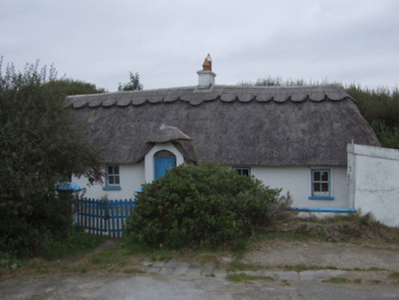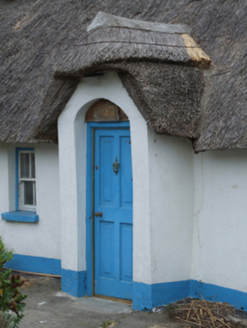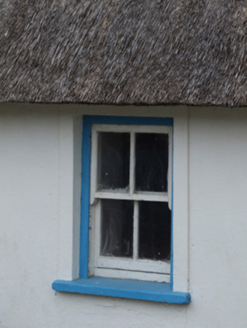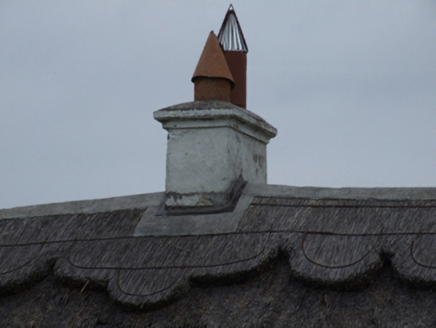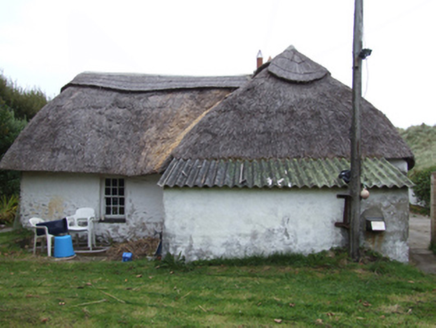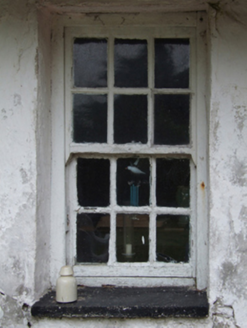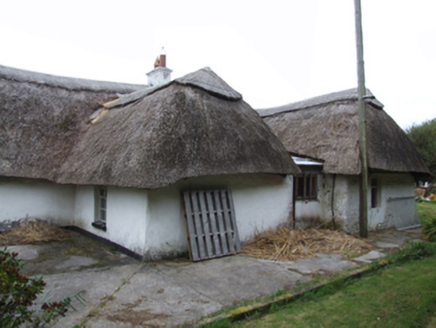Survey Data
Reg No
15703336
Rating
Regional
Categories of Special Interest
Architectural, Social
Original Use
House
Historical Use
Shop/retail outlet
Date
1842 - 1903
Coordinates
311725, 128714
Date Recorded
30/09/2007
Date Updated
--/--/--
Description
Detached three- or five-bay single-storey lobby entry thatched house, extant 1903, on a T-shaped plan centred on single-bay single-storey gabled windbreak; pair of single-bay (single-bay deep) single-storey returns (west). Renovated, ----. Disused, 2007. For sale, 2009. Replacement hipped water reed thatch roof on a T-shaped plan on collared split bough construction; pair of hipped water reed thatch roofs (west), paired exposed steel stretchers to rendered decorative raised ridge having blind scallops, rendered central chimney stack having "Cavetto"-detailed capping supporting terracotta pots, and blind stretchers to eaves having blind scallops. Rendered battered wall to front (east) elevation; lime rendered surface finish (remainder). Square-headed central door opening in segmental-headed recess with concealed dressings framing timber panelled door. Square-headed flanking window openings with concrete or rendered sills, and concealed dressings framing two-over-two timber sash windows having part exposed sash boxes. Square-headed window openings (remainder) with concrete or rendered sills, and concealed dressings including timber lintels framing six-over-six timber sash windows having part exposed sash boxes. Interior including central lobby with "spy hole". Set in landscaped grounds with rendered piers to perimeter having truncated pyramidal capping supporting timber gate.
Appraisal
A house identified as an integral component of the nineteenth-century vernacular heritage of County Wexford by such attributes as the lobby entry plan form centred on a characteristic windbreak; the construction in unrefined local materials displaying a battered silhouette with a flaking surface finish revealing evidence of "daub" or mud; the somewhat disproportionate bias of solid to void in the massing; and the high pitched roof latterly showing a non-indigenous Turkish water reed thatch finish. Having been well maintained, the elementary form and massing survive intact together with substantial quantities of the original fabric, both to the exterior and to the interior, thus upholding much of the character or integrity of a house making a picturesque visual statement in a gently rolling setting.
